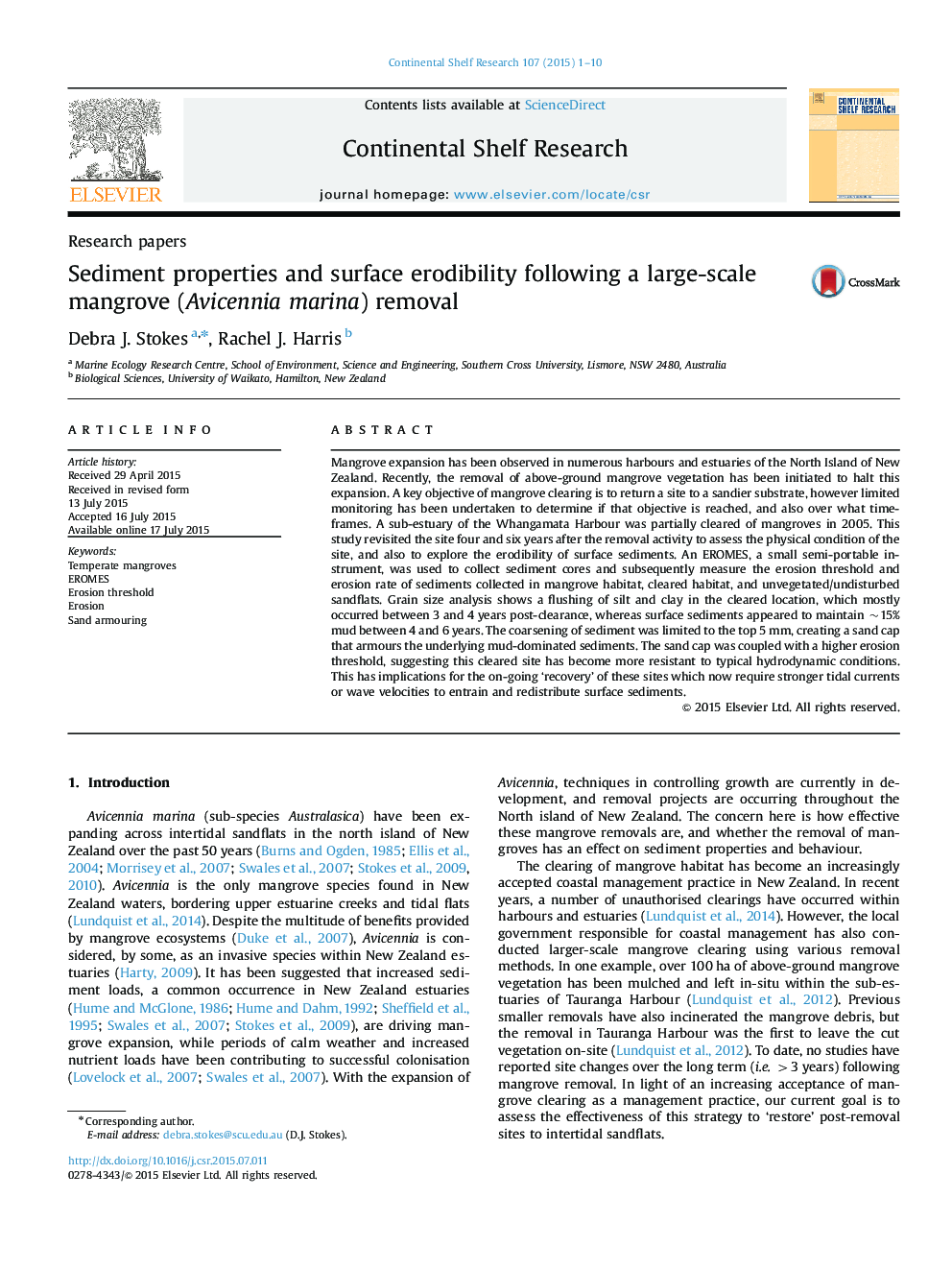| Article ID | Journal | Published Year | Pages | File Type |
|---|---|---|---|---|
| 6383070 | Continental Shelf Research | 2015 | 10 Pages |
Abstract
Mangrove expansion has been observed in numerous harbours and estuaries of the North Island of New Zealand. Recently, the removal of above-ground mangrove vegetation has been initiated to halt this expansion. A key objective of mangrove clearing is to return a site to a sandier substrate, however limited monitoring has been undertaken to determine if that objective is reached, and also over what timeframes. A sub-estuary of the Whangamata Harbour was partially cleared of mangroves in 2005. This study revisited the site four and six years after the removal activity to assess the physical condition of the site, and also to explore the erodibility of surface sediments. An EROMES, a small semi-portable instrument, was used to collect sediment cores and subsequently measure the erosion threshold and erosion rate of sediments collected in mangrove habitat, cleared habitat, and unvegetated/undisturbed sandflats. Grain size analysis shows a flushing of silt and clay in the cleared location, which mostly occurred between 3 and 4 years post-clearance, whereas surface sediments appeared to maintain ~15% mud between 4 and 6 years. The coarsening of sediment was limited to the top 5Â mm, creating a sand cap that armours the underlying mud-dominated sediments. The sand cap was coupled with a higher erosion threshold, suggesting this cleared site has become more resistant to typical hydrodynamic conditions. This has implications for the on-going 'recovery' of these sites which now require stronger tidal currents or wave velocities to entrain and redistribute surface sediments.
Keywords
Related Topics
Physical Sciences and Engineering
Earth and Planetary Sciences
Geology
Authors
Debra J. Stokes, Rachel J. Harris,
